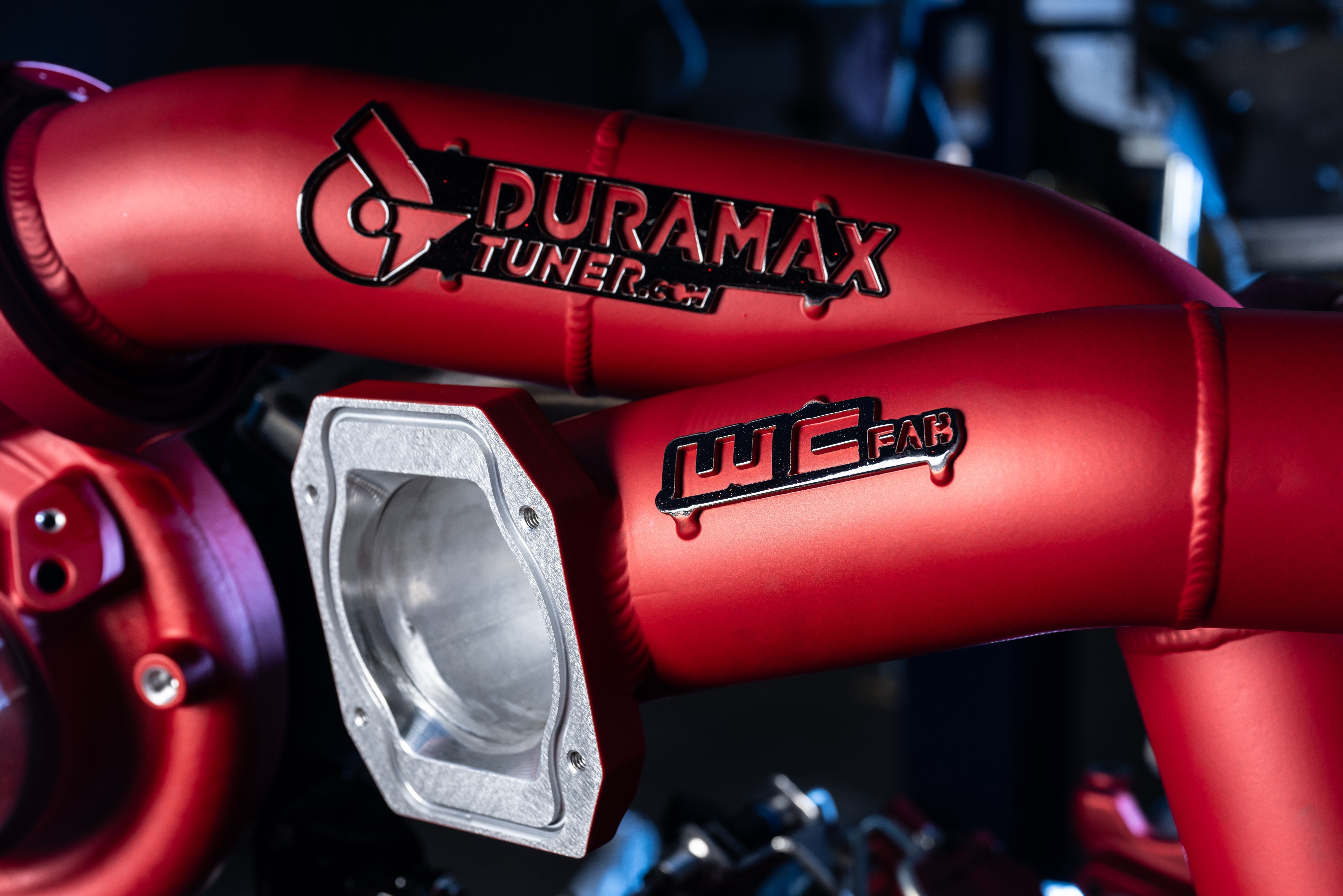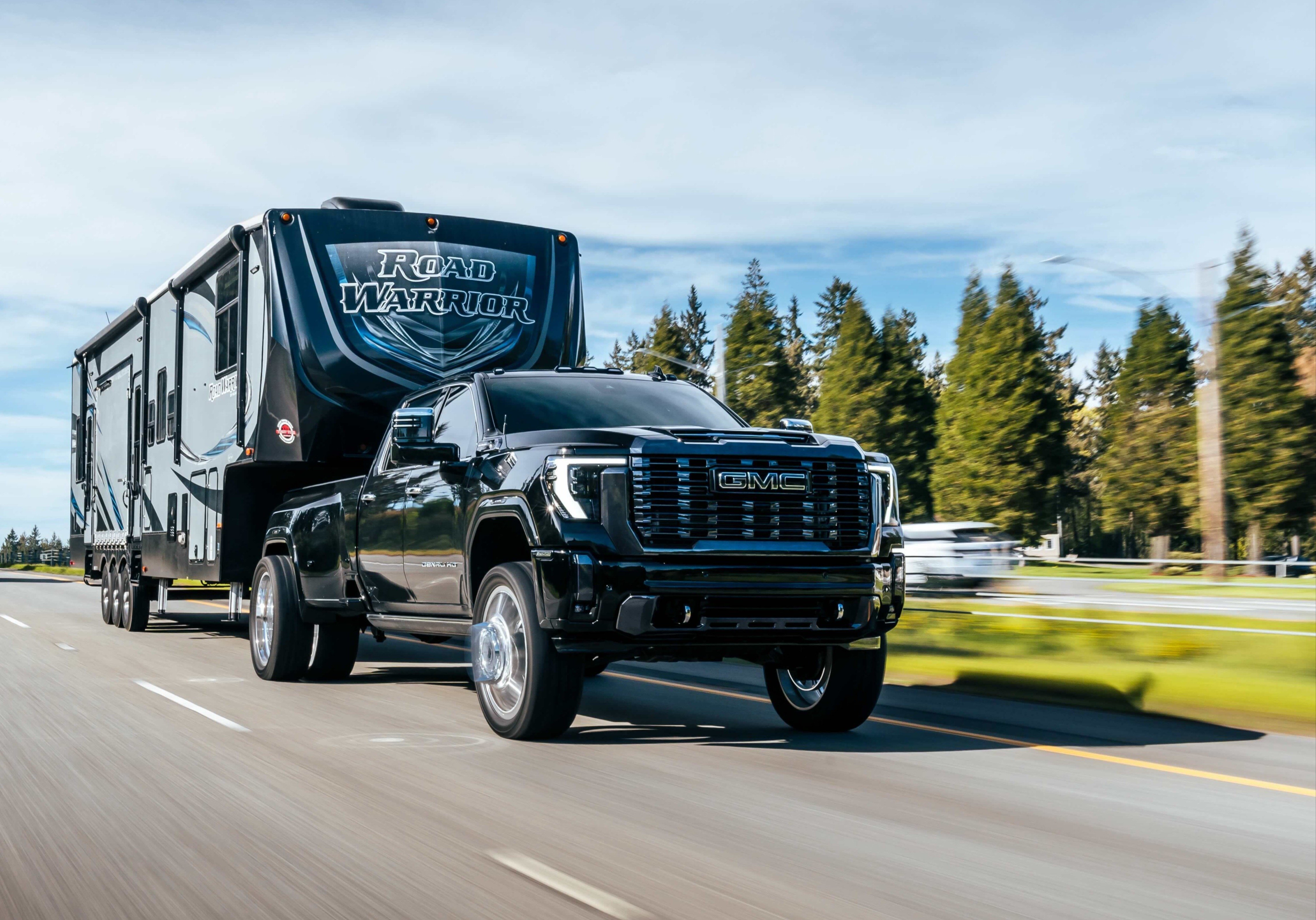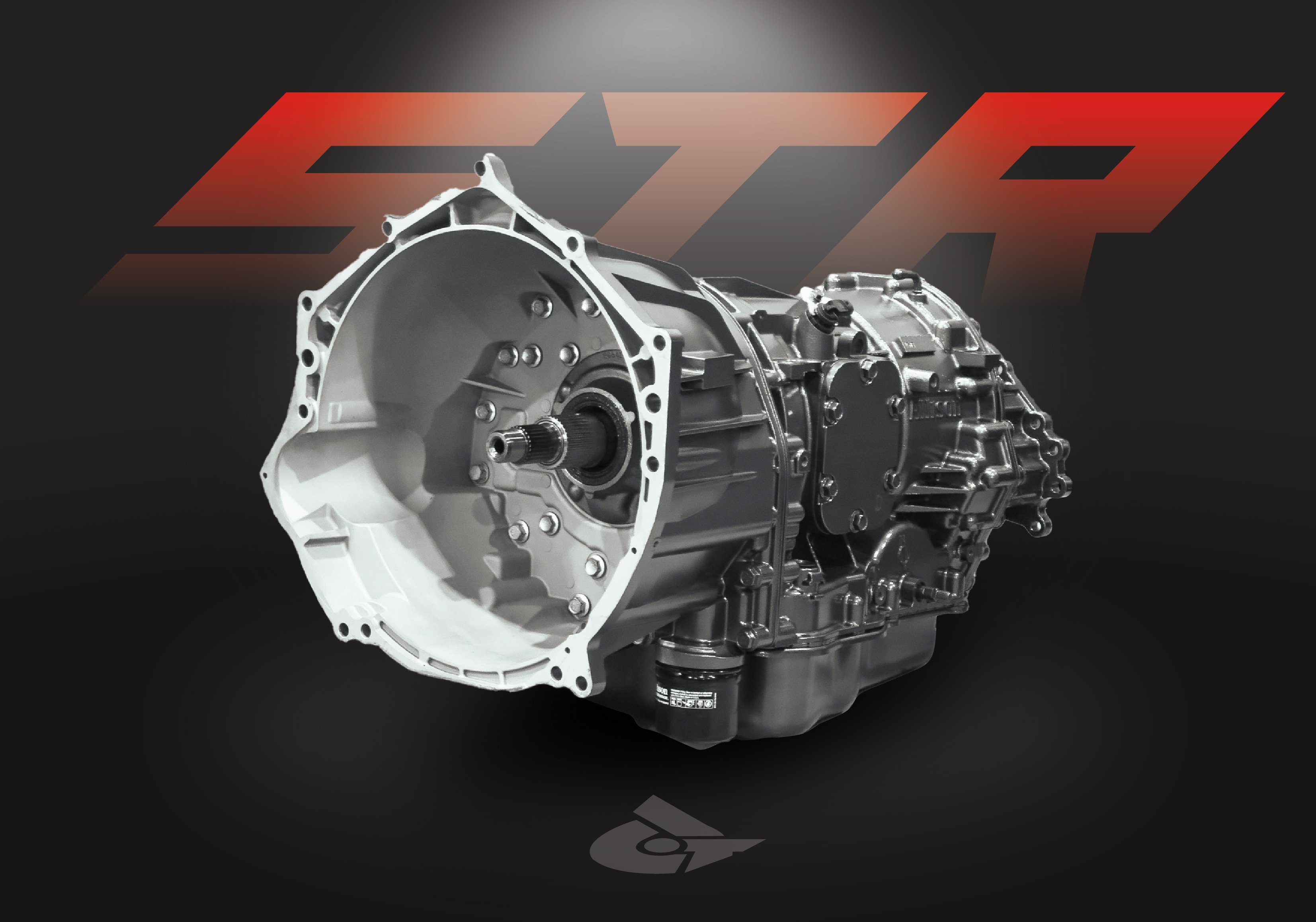Big News: Calibrated Power Joins Forces with Wehrli Custom Fabrication
[fa icon="calendar'] Oct 14, 2025 10:59:59 AM / by Ben Lawson posted in DuramaxTuner.com, duramaxtuner
Duramax VVT & LML Turbo Comparison – Stock vs STR vs 64mm vs 67mm
[fa icon="calendar'] Jun 10, 2025 9:49:22 AM / by Ben Lawson posted in Duramax Performance, better performance for lly, LLY Mods, lly performance, LLY, Duramax, Duramax Power, LML, LBZ, More Power for my LML?, what are some upgrades I can go to my LML?, LBZ Power, Boost, Turbo, LML Power, Stock Turbo, Stealth 64, Stealth, LML Performance, LMM, LBZ Turbo, LMM Turbo, LML Turbo, Diesel Turbo Options Duramax, Duramax Turbo, LLY Turbo, Stealth 64G2, Stealth VVT, Stealth 64 LML, Stealth 67, Stealth 67G2, VVT
With so many drop-in turbo upgrades to choose from it can be hard to make sure you're getting exactly what you want, and need, out of a drop-in turbo upgrade for your '04.5-'16 Duramax. Could your stock LLY, LBZ, LMM, or LML turbo be enough to crank out the power you're looking for if you really turned it up? Do aftermarket replacements really live up to their claims? Today we'll take an in-depth look at what you can expect out of varying levels of drop-in turbo upgrades for your 6.6L Duramax and compare them to what the your stock charger can provide. Below is the data from our in-depth engine dyno testing of a Stock VVT/LML turbo, Stealth STR, Stealth Mach 1, and Stealth Mach 2 turbo. All tests were conducted on a built LBZ engine connected to our Dyno-mite water brake engine dyno. This empirical data was gathered under real-world circumstances, with a serious effort made to control as many variables as possible for consistency. Installation, instrumentation, and operation of this engine through a gauntlet of tests that took several weeks.
Turbo and Test Descriptions
Dyno Engine: The platform that we will be using for this test is a 2007 6.6L LBZ Duramax that received the following upgrades before testing:
• Custom tuning
• S&B Cold Air Intake
• 100% over injectors
• 10mm CP3 pump
• Head studs
• Alternate firing order cam
• Upgraded pistons
• Upgraded crank shaft
• Upgraded connecting rods
These upgrades were necessary to be able to handle the power levels that we pushed this engine to during the testing of all 4 of these turbos.
Testing: We performed three tests to gauge the overall performance of each turbo in comparison to each other. Obviously the bigger the turbo, the more top end power. But what about all the other factors that go into creating that power like drive pressure, EGTs, air/fuel ratio, etc? What about in towing conditions and all-around drive-ability? The first test that we will present is the "Max Power" test which is your traditional dyno and power test. This test will provide a general comparison in terms of the difference in power that these different turbo options can produce. The second test presents spool up data and will give a good visualization of the difference in drivability and turbo lag that each turbo can provide. Finally our "Tow Test" is the ultimate data provider, providing insights on key data points including EGT's, drive pressure, air/fuel ratio Ect...
How To Fix Dead Pedal — The Problem Every Truck Owner Hates
[fa icon="calendar'] Apr 24, 2025 1:33:16 PM / by Ben Lawson posted in Emisssions Intact Tuning, Diesel Tuning, dead pedal, Cummins Tuning, L5P Tuning
If you’ve owned a diesel truck for any length of time, chances are you’ve experienced dead pedal at some point. It’s that frustrating delay between when you step on the accelerator and when or how much your truck actually responds. You press the throttle expecting instant power... and instead get hesitation, lag, or just flat-out nothing. It’s especially noticeable when doing things like trying to get on to the highway, taking off from a stop, towing a trailer, or even just daily driving around town. While dead pedal can be annoying at best, it can actually become dangerous in certain scenarios. But what causes this annoying lack of response and how can we fix it? Let’s break down the causes, why it happens more often in modern diesel trucks, and how you can solve it.
What Causes Dead Pedal in Diesel Trucks?
As you will come to understand, dead pedal is not always caused by one thing. There are several factors that play into the feeling of dead pedal and your condition could be caused by one or more of these factors compounding on to each other. Modern diesel trucks are packed full of torque management systems, emissions controls, and drivability limiters straight from the factory. The manufacturers build these trucks with tuning overhead that often sacrifices throttle response for things like fuel economy, reliability, and emissions compliance. However, if done correctly, fixing your truck's dead pedal problem does not mean you have to sacrifice any one of these.
The Importance of Running Gauges for Your Diesel Truck
[fa icon="calendar'] Apr 3, 2025 7:30:00 AM / by Ben Lawson posted in New Diesel, Diesel Tuning, Tuning for new diesel, 750hp, towing, towing performance
Diesel truck owners demand reliability, performance, and longevity from their vehicles. Whether you're towing heavy loads, daily driving with a bit more power or pushing your truck to its performance limits, properly monitoring key engine parameters is crucial. Over the years, manufacturers have recognized this need, gradually adding more gauges to help truck owners stay within safe operating ranges. However, factory gauge clusters often lack essential metrics, leaving gaps in the data needed to protect your investment. This is where aftermarket gauges and monitoring systems become a major asset.
Breaking Down the Stealth Turbo Line: STR, Mach 1, and Mach 2 – Which One Is Right for You?
[fa icon="calendar'] Feb 21, 2025 7:00:00 AM / by Ben Lawson posted in Cummins Turbo, Turbo, Bolt on turbo, LBZ Turbo, LMM Turbo, LML Turbo, Diesel Turbo Options Duramax, Diesel Turbo Options Cummins, Duramax Turbo, LLY Turbo, Turbo Upgrades, L5P Turbo
When it comes to turbochargers for diesel trucks, Stealth Turbos have made a name for themselves by offering performance, reliability, and quality upgrades across the board. Whether you’re driving a 6.6L Duramax, 6.7L Powerstroke or a 6.7L Cummins, Stealth turbos can provide solutions for a multitude of different needs and wants—from stock replacements to high-performance setups. In this blog post, we’ll break down the key differences between Stealth’s STR, Mach 1, and Mach 2 line's of turbochargers and help you decide which one is the best fit for your driving needs.
DT Series STR Transmission: Built for Power, Smooth Shifts, and Long-Term Reliability
[fa icon="calendar'] Feb 15, 2025 8:00:00 AM / by Ben Lawson posted in better performance for lly, LLY, Duramax, LML, LBZ, Stock, LB7, Transmission Duramax, Allison, Transmission Tuning, LMM
Your Duramax-powered Chevy or GMC was built to tackle tough jobs with ease and deliver years of dependable performance. But when you push these trucks to their limits on a daily basis, reliability can quickly become a concern. While the engine is often up to the task, the factory transmission is usually the weak link—struggling under the added stress until clutches start slipping and failures begin. In many cases, a transmission rebuild or replacement is needed long before the engine shows any signs of trouble. And if you frequently push your truck to the max, even a rebuilt transmission may not hold up for long.
That’s exactly what inspired the development of the all-new DT Series STR Transmission. Designed for stock and mild-tuned trucks, the STR is built with key upgrades that stretch your budget further by maximizing durability and reliability. Whether you're replacing a worn-out stock unit or upgrading to gain a little more capability, the STR delivers the strength and performance you need to handle heavy towing and increased power from tuning—without the constant worry of another rebuild.
Which Custom Tuning Flash Tool To Go With
[fa icon="calendar'] Feb 7, 2025 7:14:00 AM / by Ben Lawson posted in switchable tuning, switch on the fly tuning, Tuning for new diesel, Best tuning for, custom tuning, 50-state tuning
If you're considering custom tuning for your diesel truck for the first time, you've probably run into the question of which flash tool to go with. With so many options on the market, and so much buzz around certain tools it can be difficult to decide which one will provide the best tuning experience and features. In this article, we'll break down some of the most popular custom tuning flash tools on the market today—HP Tuners, EZ Lynk, EFI Live (SPADE), MM3, Edge CTS3 and Black Box Devices—to help you make an informed decision for your diesel truck.
What Is a Flash Tool?
Before we dive into the specifics, let’s quickly dive into what a flash tool is. A flash tool, or programmer, is at its core a diagnostic device/tool that will allow you to upload custom tunes to your truck’s ECU (Engine Control Unit) through the OBDII port of your vehicle. These tunes will go on to adjust various engine parameters like fuel delivery, timing, boost pressure, and transmission settings to optimize your truck’s power and performance. The right flash tool will allow you to easily tune and monitor your diesel's performance, giving you the advantages of diagnostic insights at your finger tips and comprehensive control over your vehicle.
Let’s take a closer look at each of these popular flash tools and what they have to offer.
Adding Power to Your Farming Equipment: The Benefits of Custom Ag Tuning
[fa icon="calendar'] Feb 5, 2025 4:19:56 PM / by Ben Lawson posted in Tuner for Combine, tractor tuner, combine tuner, tractor tuning, combine tuning, tractor, Combine, Tuner for tractor, Farm
As a farmer, you know that your equipment is the backbone of your operation. Whether you’re planting, harvesting, or hauling, having the right power to get the job done is crucial. But what if you could add power to your existing equipment without the hefty price tag of upgrading to a more powerful model? Enter Custom Ag Tuning—the easy, effective way to increase performance, improve efficiency, and keep your equipment running strong.
Why Add Power to Your Farming Equipment?
The demands on your tractors and combines are high, and sometimes the power provided by stock equipment just isn’t enough. Whether you’re running a larger implement, climbing steep hills, hauling heavy loads, or navigating through tough, wet terrain, your machinery needs to work hard—and you need it to work efficiently.
Diagnosing, Troubleshooting, and Upgrading Your Allison 1000 Transmission
[fa icon="calendar'] Dec 27, 2024 11:45:00 AM / by Ben Lawson posted in LLY, Duramax, LML, LBZ, LB7, Transmission Duramax, P0700, Allison, LMM, L5P
If you’re a Duramax diesel enthusiast or truck owner, you’re likely familiar with the Allison 1000 transmission. Revered for its durability, smooth shifting, and ability to handle the power of diesel engines like the GM Duramax, it’s a popular choice in heavy-duty trucks. However, even the best transmissions aren’t immune to problems. In this detailed guide, we’ll combine insights on diagnosing common issues, troubleshooting tips, and upgrading your Allison transmission to ensure your truck keeps running strong under any condition.
Comparison of Allison 1000 Transmissions Used in the 6.6L Duramax (2001 - 2024)
[fa icon="calendar'] Dec 23, 2024 10:54:00 AM / by Ben Lawson posted in LLY, LML, LBZ, Stock, LB7, DT750, Transmission Duramax, Allison, LMM, DT550, L5P, L5D
The Allison 1000 transmission has long been a cornerstone of GM’s HD truck lineup, particularly in conjunction with the Duramax engines. Over the years, this transmission has undergone continuous refinements to meet the evolving demands of power, performance, and emissions standards. In this post, we'll break down how the Allison 1000 transmission has evolved across six generations of the Duramax engine family: LB7, LLY, LBZ, LMM, LML, and L5P, highlighting key changes and comparing performance across each year range.










